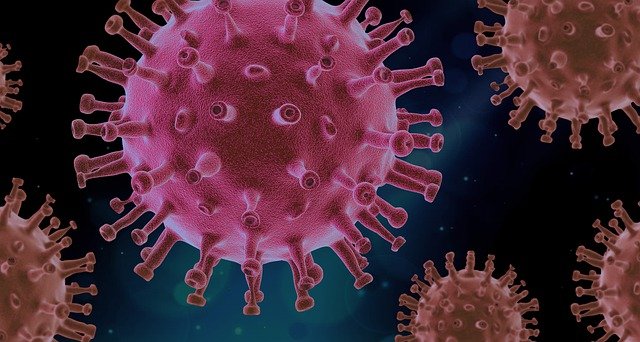
Since COVID-19 arrived in the UK last year, there have been several instances where new 'variants' of the virus have emerged, causing distress among health professionals, politicians and the general public.
If you've been reading the news lately, you already know that COVID-19 variants can be dangerous (though it is impossible to know exactly how dangerous a given variant might be until a certain amount of testing has been carried out). But where exactly do these variants come from? How do viruses mutate to create them?
In this blog, we'll take a closer look at viruses (and COVID-19 in particular) to find out how and why they mutate, resulting in potentially even more dangerous variants.
[more]
Viral mutation
As viruses like the coronavirus spread across the globe, they are continuously mutating. This process is known as viral mutation, where the virus goes through a number of genetic changes.
Now, this may sound pretty scary, but these changes are often very minor and do not have a significant impact on the transmission rates of a virus or on how severe infection may be. In fact, a large number of viral mutations end up making the virus in question less infectious.
Much of what we know about how viruses mutate comes from observing the influenza virus in order to continuously update flu vaccines (which would otherwise be made obsolete by the emergence of new variants over time).
There are two ways in which an influenza virus can mutate: antigenic DRIFT and antigenic SHIFT.
Antigenic Drift
As a virus transfers from person to person, its genes undergo random 'errors' (also known as genetic mutations). As time passes, these genetic mutations can alter the virus's surface proteins - or 'antigens'.
Our immune system uses these antigens to detect and combat the virus, but sometimes, the virus is able to evolve in order to evade our immune response. What happens then?
In an influenza virus, genetic alterations build up and cause its antigens to 'drift', which means the surface of the mutated virus appears different to that of the original virus. When these viruses drift far enough from where they started, vaccines that were developed to offer immunity against the original virus cease to be effective against the new, drifted strains. As a result, the population becomes newly vulnerable to the mutated virus.
Antigenic drift is one of the main reasons why flu vaccines are reviewed and updated each year. Without those annual updates, we would not be able to keep up with the virus as it changes, and we would therefore become more susceptible to it.
Antigenic Shift
The second way in which a virus may mutate is through a process called antigenic shift. This is when an influenza virus undergoes a sudden, major change in antigens - a far rarer occurrence than the gradual antigenic drift described above.
So how does this happen? Well, an antigenic shift occurs when two related - but somewhat different - strains of influenza virus infect a host cell at the same time and combine to make a brand new strain. They do this through a process known as 'reassortment', where the genomes of the virus (which are made up of eight separate pieces of RNA) come together and 'mate'. The process of reassortment delivers a new subtype of the virus, containing antigens that are a mixture of the original strains.
When an antigenic shift occurs, the majority of people have little to no immunity against the resulting new strain. These are the viruses that are most likely to cause a pandemic.
How has COVID-19 mutated?
In the case of COVID-19, which is caused by a specific type of coronavirus, reassortment doesn't occur; this is because coronaviruses do not have segmented genomes made up of different pieces of RNA. Instead, coronaviruses have genomes that consist of a single, long piece of RNA.
The way in which COVID-19 has been able to mutate is through two coronaviruses infecting the same cell, forcing it to recombine. During this process, a new single RNA genome is put together from pieces of the two 'parental' coronavirus genomes.
So, to summarise, there are several ways in which a virus can mutate. The two most common ways for this to happen is through the processes of antigenic drift and antigenic shift, but sometimes it can occur through recombination.
As a result of these processes, the vaccines that scientists develop must be constantly reviewed in order to combat any new strains that pop up and keep the population protected.
Further Reading
